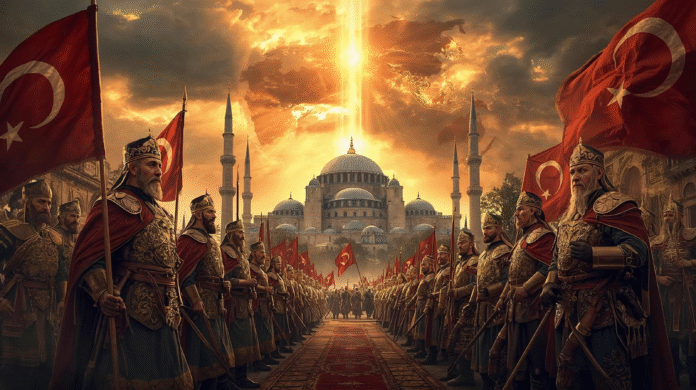The Ottoman Empire was a vast empire which covered Southeastern Europe, Western Asia, and North Africa for over six centuries from the late 13th century to the early 20th century. Osman I was the founder. This empire was well known for its military strength, myriad people, and culture.
The Ottoman Empire began in Turkey, then called Anatolia and Asia Minor. The Turks conquered Anatolia and the Balkans. The Ottomans ended the Byzantine Empire after the seizure of Constantinople in 1453. They controlled the Middle East, Europe, and the Mediterranean Basin for six centuries. The Ottomans ruled over many kinds of people. This empire became a global power of that time. After the death of Suleiman the Great, the Ottoman Empire declined. The Ottomans suffered military defeats in the late 18th and 19th centuries.
The word Ottoman is derived from Osman I, its founder. The word Turk means farmers of Asia Minor. The empire was variously known as Ottoman, Turkish, and Turkey.
Mehemet Ali was a great military genius. He conquered Constantinople in 1453, ending the Byzantine Empire. This event was significant in that the Turks blocked the land route to Asia, mainly to India. So the Europeans discovered the sea route to India for trade.
The empire became a strong naval force in the Mediterranean Sea. The Ottomans became participants in European politics. Mehemet VI, the last sultan, left the country after the abolition of the Ottoman Sultanate on 17 November 1922. The Ottoman Empire was defeated in the First World War. The Republic of Turkey was established under Mustafa Kemal Pasha in 1923. The new capital was Ankara.
The Ottoman Empire was well known for its military strength and culture. For example, Mehemet Ali of Egypt. It is said – Mehemet Ali was half barbarian, half illiterate, wholly a genius.
So far as culture is concerned, the Ottomans absorbed some of the traditions, art, and institutions of the regions conquered. And they added something to it. They adopted architecture, cuisine, music, leisure, and government. The language of the Ottomans was Turkish, but Persian was the vehicle of thought of the empire.
Slavery was a part of the empire. The Ottomans contributed much to Persian literature. In the Ottoman Empire, education was divided on religious lines. The two streams of Ottoman literature were poetry and prose. Poetry was more preferred. The earliest work of Ottoman historiography was Iskender composed by the poet Taceddin Ahmedi. Ottoman poetry was a highly ritualised and symbolic art form. From Persian poetry they inherited a wealth of symbols. Ahmed Nedim Efendi was one of the most celebrated Ottoman poets.
As France was close to the Ottoman Empire, French influence was most dominant in Ottoman literature. Romantic movement, Realist movement, and Naturalist movements can be seen in Ottoman literature.
On the whole, Ottoman Turks were not only soldiers but men of culture also. For many centuries Ottomans dominated the world and fascinated world literature. They have left a lasting legacy in literature, especially in poetry, which is highly original and contains an aesthetic sense. Everything in this world comes to an end. The First World War finished them—but not their culture and poetry.
(The views expressed are the writer’s own.)

Radhakanta Seth is a Former Income tax officer in Sambalpur. He is a Freelance writer and his articles have been published in some Oriya dailies like Sambad, Samaj, Dharitri and English dailies like The Telegraph and in a sociological journal ‘Folklore’ published from Kolkata.
(Photo has collected from net )

